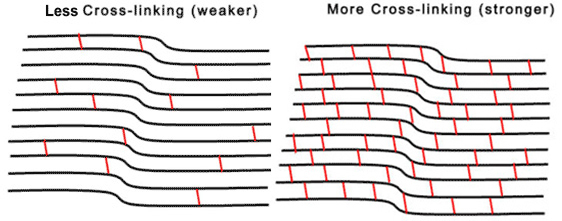Receiving a keratoconus diagnosis can feel overwhelming, especially if you’re unsure how it will affect the long-term quality of your vision. It may be comforting to learn that there are ways to slow down its progression and prevent it from getting worse.
While corneal transplants were once the primary treatment for the condition, more advanced treatments are now available to many keratoconus patients. Keep reading to learn more about keratoconus and the treatments that might stop its progression.
What is Keratoconus?
Keratoconus is a progressive eye condition that occurs when the normally round, dome-shaped cornea starts to thin and bulge out, forming into a cone shape. It affects vision by disrupting how light enters and focuses on the retina.
Some of the signs and symptoms of keratoconus include:
- Blurred or distorted vision
- Double vision
- Worsening myopia (nearsightedness)
- Frequent changes in eye prescription
- Poor night vision
In its early stages, the symptoms of keratoconus can usually be corrected with glasses or soft contact lenses. As the condition progresses, corrective eyewear alone may not be enough to preserve the quality of existing vision and prevent further vision impairment.
Although the exact cause of keratoconus isn’t fully understood, genetic and environmental factors may be involved. Potential risk factors for the condition include a family history of keratoconus, chronic eye rubbing, and certain underlying health conditions, such as retinitis pigmentosa.
The onset of keratoconus often occurs in a patient’s teen years and slowly worsens until it stabilizes once they have reached their 30s or 40s. It usually affects both eyes, but it is not unusual for one eye to be affected more than the other.
Some patients with keratoconus may experience rapid changes in their vision over just a few months, while others may experience a gradual worsening of their vision over several years. Early diagnosis and treatment are key to slowing the progression of the condition and protecting vision.
What are the Different Treatments for Keratoconus?
There is no known cure for keratoconus, but there are treatments available that can slow its progression and improve vision. Today, the most common treatments for keratoconus are specialty contact lenses and a procedure called corneal cross-linking.
Specialty Contact Lenses
As keratoconus progresses, soft contact lenses may be unable to accommodate changes in vision or corneal shape caused by the condition. Often, specialty contact lenses are the next step in treating more advanced keratoconus.
Hard Contact Lenses
Hard contact lenses, also known as rigid gas permeable (RGP) lenses, are used to treat keratoconus because they are designed to fit over the irregular corneal shape, smoothing it out and allowing light to better focus on the retina.
RGP lenses can be customized to fit individual patients’ unique corneal shapes. They are made of a material that lets oxygen pass freely through, which is essential for maintaining healthy corneas.
Scleral Lenses
Scleral contact lenses are large, rigid lenses that form a dome over the cornea and rest on the white part of the eye, the sclera. Unlike soft or hard contact lenses, scleral lenses do not touch the cornea.
Because scleral lenses do not sit on the cornea, a tear reservoir forms between the lenses and the eye, providing moisture and oxygen while correcting vision. This feature can be especially beneficial for keratoconus patients who also suffer from dry eye.
Hybrid Lenses
If a patient has difficulty tolerating a hard contact lens, they may be able to wear a hybrid lens, which has a rigid center with a softer, more comfortable ring around the outside. They could also be asked to try “piggybacking” lenses, in which a soft contact lens is worn on top of a hard lens.
Corneal Cross-linking
Corneal cross-linking (CXL) is one of the latest and most successful treatments for keratoconus. This procedure helps strengthen corneal tissue to stop further corneal bulging.
There are two types of CXL: the epithelium-on method and the epithelium-off method.
In an epithelium-off procedure, the surface of the cornea, the epithelium, is removed, and riboflavin (vitamin B2) drops are applied to the cornea. A UV light is used to cause crosslinking of corneal tissue, stiffening the cornea to prevent further shape changes.
During an epithelium-on procedure, the epithelium is kept intact while the riboflavin drops and UV light are applied. This method takes longer to perform, but offers several advantages.
The epithelium-on method has a shorter recovery time, reduced risk of post-procedure infection, and is generally a more comfortable procedure. It may restore vision more quickly than the epithelium-off method.
Will I Need a Corneal Transplant for Keratoconus?
Most patients with keratoconus will not need a corneal transplant if the condition is diagnosed and treated in its early stages. While once the primary treatment for keratoconus, corneal transplants are uncommon today.
Corneal transplants are typically only recommended for patients whose vision cannot be corrected with specialty lenses or when corneal cross-linking is no longer effective. It may be the best option for patients with advanced keratoconus whose corneas have become extremely thin.
If your ophthalmologist has recommended a corneal transplant, any anxiety you might have about the procedure is understandable. It may help to know that today’s corneal transplants use the most advanced technologies for the best outcomes, with a low risk of complications.
While Eye Center of Texas is a medical ophthalmology practice that specializes in eye surgery and advanced care for eye diseases, we are able to recommend Houston area optometrists that specialize in specialty contact lenses for patients with keratoconus.
Keratoconus can’t be cured; however, treatments are available to help it from progressing. The doctors at Eye Center of Texas can determine if corneal cross-linking surgery is right for you.
Do you have keratoconus and want to learn more about your treatment options? Schedule an appointment at Eye Center of Texas in Houston, TX, today!













